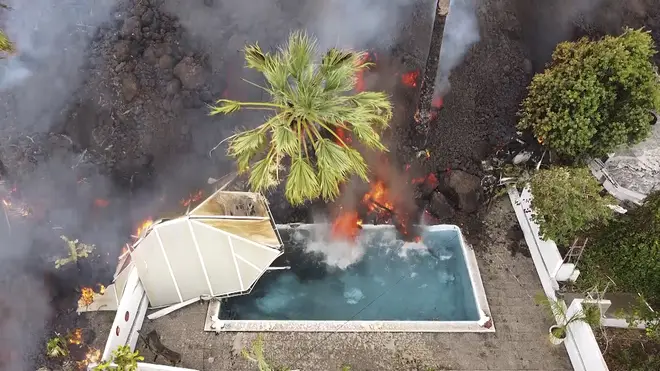
James O'Brien 10am - 1pm
21 September 2021, 13:14

La Palma, with a population of some 85,000 people, is part of the volcanic Canary Islands.
Several small earthquakes have shaken the Spanish island of La Palma, keeping nerves on edge as rivers of lava continued to flow towards the sea and a new volcano vent blew open.
The new vent is 3,000 feet north of the Cumbre Vieja ridge, where the volcano first erupted on Sunday after a week of thousands of small earthquakes.
That so-called earthquake swarm gave authorities on the island off the African coast a warning that an eruption was likely and allowed more than 5,000 people to be evacuated, avoiding casualties.
The new fissure opened after what the Canary Islands Volcanology Institute said was a 3.8 magnitude quake on Monday.
La Palma, with a population of some 85,000 people, is part of the volcanic Canary Islands.
After moving downhill across the island’s countryside since Sunday’s eruption, the lava is gradually closing in on the more densely populated coastline.
Officials said a river of lava was bearing down on Todoque, where more than 1,000 people live and where emergency services were preparing evacuations.
About 6,000 people on La Palma have been evacuated so far and 183 houses damaged, government spokeswoman Isabel Rodríguez said after a Cabinet meeting in Madrid.
The new vent is 900 meters (3,000 feet) north of the Cumbre Vieja ridge, where the volcano first erupted after a week of thousands of small earthquakes.
Lava by Tuesday had covered about 260 acres of terrain and destroyed 166 houses and other buildings, according to the European Union’s Earth Observation Programme, called Copernicus.
Unstoppable rivers of lava, as much 20 feet high, rolled down hillsides, burning and crushing everything in their path.

The lava was expected to reach the Atlantic Ocean on Tuesday, where it could cause explosions and produce clouds of toxic gas.
Scientists monitoring the lava measured it at more than 1,000C (1,800F).
Scientists say the lava flows could last for weeks or months.